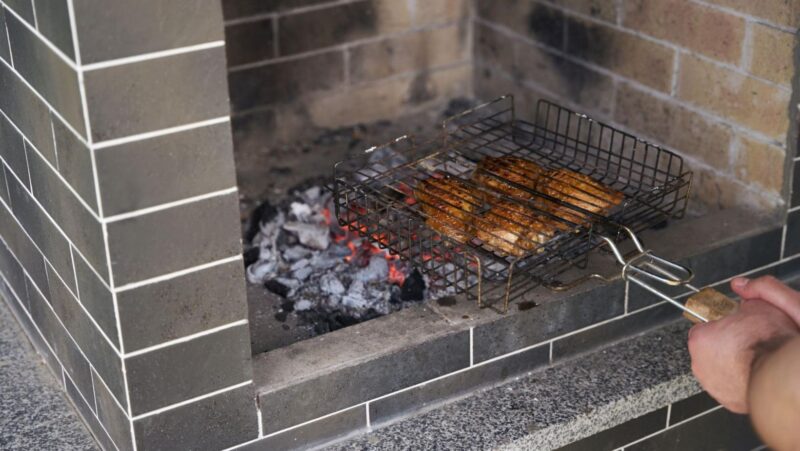
Have you ever stood on your porch, eagerly awaiting the transformation of your dull and lackluster lawn into a lush and vibrant sea of green? You’ve followed all the advice, diligently watering and mowing your grass, but there’s still one crucial step left – fertilizing. We’ve all experienced the frustration of waiting for results from our lawn fertilizer. Will it take a few days? Weeks? Months?
The uncertainty can be overwhelming, especially when you’re eager to show off your beautiful yard to friends and family. In this blog post, we’ll dive deep into understanding the timeline of lawn fertilizer and how long you should expect to see results.
Lawn Fertilization: Is It Necessary?
Absolutely, lawn fertilization is not just another item on your gardening to-do list; it’s an essential step for achieving that picture-perfect lawn we all dream of. Providing your grass with the right nutrients at the right time can ensure your lawn stays healthy and resilient, capable of withstanding environmental stressors like extreme weather and foot traffic.
Abundant Growth
Fertilization enriches the soil, supplying your lawn with essential nutrients such as nitrogen, phosphorus, and potassium. These elements are the building blocks for robust growth, leading to a dense and vigorous lawn.
Enhanced Greenery
Regular fertilizing not only encourages growth but also intensifies the green hue of your lawn. A well-fed lawn will have a rich emerald color that is both eye-catching and indicative of healthy, thriving grass.
Weed Reduction
A thick and nourished lawn leaves little room for weeds to take root. Fertilizer helps grass plants to grow faster and stronger, outcompeting unwelcome invaders for space and resources.
Disease Resistance
Healthy, well-fertilized turf is more resistant to diseases. Just like how a balanced diet can bolster our immune system, proper nutrition through fertilization primes your lawn to fend off pathogens.
Improved Soil Structure
Fertilization doesn’t just benefit the grass; it also improves the overall soil structure.

When applied correctly, fertilizers can enhance soil aeration and water retention, which in turn promotes deeper root growth and a more resilient turf.
Stress Tolerance
A lawn that is regularly maintained with the appropriate fertilizers is better equipped to handle stress. This includes not only environmental stresses such as drought and extreme temperatures but also physical stresses such as heavy foot traffic or the pressure of outdoor furniture.
Environmental Benefits
Believe it or not, a healthy lawn can positively impact the environment. Dense, well-fertilized grass traps carbon dioxide, releases oxygen, and helps prevent soil erosion. By acting as a natural filtration system, it also plays a role in purifying the water that seeps into the ground.
Lawn Fertilization Timeline
Understanding the timeline of lawn fertilization is critical for setting realistic expectations and maximizing the effectiveness of your efforts. Patience is indeed a virtue when it comes to lawn care, and the fruits of your labor can be seen through the gradual yet distinct stages of your lawn’s transformation. In this section, we will explore the key phases of fertilization and the typical duration of each to help you plan and recognize progress in your lawn’s journey toward perfection.
Initial Absorption
After applying fertilizer, the initial absorption begins as the nutrients start to break down and penetrate the soil. This process is dependent on various factors, including the type of fertilizer used and the weather conditions. Generally, initial absorption takes a few days to a week for the nutrients to properly integrate with the soil and begin affecting your lawn.
Visible Growth
Once the nutrients have been absorbed, you’ll start to see a change in your lawn’s growth patterns. This stage may occur one to two weeks after application. You might notice faster growth, which could mean more frequent mowing is required. This growth spurt is a clear indication that the fertilization is feeding your grass effectively.
Peak Greening
Following the initial growth phase, the peak greening phase kicks in when the grass blades gain a richer and healthier color. This typically happens two to four weeks after fertilization, marking the period when your lawn starts to stand out with its vibrant green shade.
Sustained Health
The true test of effective fertilization is the sustained health of your lawn over time. After four to six weeks post-fertilization, a well-fertilized lawn should not only look lush but also be more durable and resistant to environmental stresses. Regular monitoring and maintenance practices should continue to ensure ongoing health and beauty.
Long-Term Benefits
Beyond six weeks, the effects of fertilization transition into long-term benefits. Properly fertilized lawns will have demonstrated improved soil structure, enhanced stress tolerance, and a reduction in weeds. This period is crucial for lawn care routines to stabilize the progress made and maintain the lawn’s overall well-being for the seasons to come.
Popular Lawn Fertilizing Techniques
An outstanding lawn requires not only high-quality fertilizer but also the application of proper techniques to maximize the benefits of the nutrients provided.

Each technique offers a different advantage, and knowing when and how to use them is just as crucial as the fertilization itself. Let’s explore some of the top techniques used by lawn care professionals and gardening enthusiasts to ensure their lawns remain in peak condition.
Broadcast or Rotary Spreaders
Broadcast spreaders, also known as rotary spreaders, are ideal for covering large areas evenly. These spreaders cast fertilizer granules in a wide arc, saving time and effort on vast lawns. When using a broadcast spreader, it’s important to walk at a consistent pace to ensure even distribution of the product.
Drop Spreaders
Drop spreaders deliver a precise application of fertilizer directly between the wheels of the spreader. This method is particularly useful for smaller lawns or areas that require careful attention to prevent fertilizer from spreading to non-lawn areas like flower beds or walkways.
Liquid Spray Applications
Liquid fertilizers can be applied using a sprayer for a quick and uniform application. This technique allows for swift absorption and is often used when a fast-acting nutrient boost is needed. Applying liquid fertilizers in calm weather is essential to prevent drift and ensure the spray targets the intended areas.
Handheld Spreaders
Handheld spreaders are perfect for fertilizing small patches of lawn or hard-to-reach areas. While they require more manual effort, they offer control and precision, which is essential near garden beds, pathways, and other delicate zones.
Spot Treatment
When dealing with problem areas that require additional attention, spot treatment with a specific fertilizer mix can be effective. This technique addresses issues such as nutrient deficiencies or pest infestations localized in one part of the lawn.
Final Thoughts
Fertilizing your lawn is an essential aspect of maintaining a healthy and visually appealing outdoor space. By understanding the timeline and techniques of lawn fertilization, you can give your grass the nutrients it needs to thrive and showcase its full potential. With patience, proper maintenance practices, and attention to detail, you can enjoy a vibrant, stress-resistant, and long-lasting lawn. Contact this contractor for lawn maintenance services in your area, and let the experts handle all your fertilization needs!



